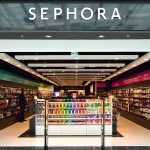While large brick-and-mortar chains like Wal-Mart and Target trick-or-treat a hefty portion of Halloween profits, pop-up stores have become the bread and butter of companies like Party City. Rising real estate prices hint to a noteworthy discrepancy in space availability and Halloween Pop-Up stores teach us a few lessons about launching a successful seasonal pop-up.
What was once a kid’s holiday has become something that most adults now participate in, too,” says Lesley Bannatyne, a historian and the author of Halloween: An American Holiday, an American History. This year, the National Retail Federation predicts that Halloween spending in the U.S. will reach an all-time high this year with candy, costume, and decoration sales reaching $8.4 billion. This staggering figure is up 70% in a decade. Much like the overwhelming popularity of Pokémon Go at its outset, here at Storefront we’re interested in the wider-reaching effects of cross generational appeal, and what it signifies for the immediate future of retail.
Halloween stores are an anomaly, and point to the potential of pop-up stores, because they flourish when regular retail is suffering. Halloween pop-up stores expanded rapidly during the last recession, when mall landlords were hurting for stable tenants. Space was cheap and the stores became increasingly common, appearing for short spells in larger spaces. Costumes and candy are affordable – making the holiday largely recession-proof. Sales actually increased in 2008 because, as Howard Beige, the VP of costume empire Rubie’s, puts it, “almost anyone can buy a $9 mask from Walmart,” and nearly half of all American adults are dressing up this year, twice as many as 30 years ago. After the 2008 economic recession, Halloween stores became increasingly common in the U.S. and they began appearing short-term in larger spaces.
U.S. Retail Landscape: The Fall of Regional Malls & Price Rise
Despite the overwhelming headlines of Halloween Pop-Ups and their success, retail vacancies are down and rents are on the rise. 2016 saw diminishing growth as most Halloween pop-ups scaled back their operations. Party City reduced its Halloween City presence from 333 stores last year, to roughly 275 this year. While part of that decision was because the holiday shifted from the weekend to a workday, it was also a function of real estate, Party City CEO Jim Harrison said in an interview with CNBC .
There is a decided discrepancy between available spaces and those deemed ideal for seasonal pop-up stores. Pop-ups are not opening in regional commercial malls, which are badly in need of a revival across the country. Pop-Up Mall landlords historically prefer tenants for longer periods of time, and the price tags for short-term rentals match their preference, as much as doubling for seasonal stores. And because space is tighter, the cost is also up compared with last year. The average asking rent for retail space in the U.S. was $26.64 a square foot in the second quarter, up from $24.81 a year earlier, according to Cushman & Wakefield.
In addition to tighter supply, the mall space that is on the market often doesn’t meet these retailers’ criteria. Store closures have skewed toward regional malls, which have been largely untapped by Halloween stores, said Garrick Brown, a vice president of retail research at Cushman & Wakefield.
However, off-mall shopping centers are some of the strongest-performing properties, with tenant lists that favor off-price retailers, grocery stores and services, which are traditionally more resilient to e-commerce.
“The guys that are closing [stores], I think that news is overshadowing where the growth is occurring,” said Brown.
“The important thing about the temporary stores is really visibility,” Harrison said. “You’ve got very little time to develop any sort of awareness.”
Planning ahead? The market is expected to loosen up next year, when more Sports Authority and sizeable locations come online, Halloween shops take regional malls into consideration, and more retailers announce plans to close stores.
Case Study: Ricky’s
Amid rising real estate costs and customers who are increasingly content shopping online, we look at how one brand is adapting their pop-up store strategy and maintaining visibility:
Ricky’s, a beauty-supply chain in New York and Miami, opens Halloween pop-up stores each fall for a duration of two months. In years prior the they launched as many as 30 temporary stores in addition to their 28 permanent brick-and-mortar shops with some 1,000 temporary pop-up staff members, but this year they opened only three stores, albeit much larger than usual. The company has come to depend on temporary outlets as a tool for brand expansion since co-founder and CEO of Ricky’s, Todd Kenig, opened the chain’s first pop-up store, in 2005.
Since then, Halloween sales have grown to account for a whopping 20 percent of the chain’s annual $55 million in sales. Yet more important than added revenue is the pop-ups’ ability to serve as test sites for permanent Ricky’s locations. “The profit is the icing on the cake,” says Kenig. “The real benefit is to study the demographics in an area.”
“The profit is the icing on the cake,” says Kenig. “The real benefit is to study the demographics in an area.”
Pop-up stores are the prodigal kids of retail right now, but they don’t just pop up. They require early planning and the ability to quickly ramp up hiring and management. Despite their quick expiry date, their impacts are long-lasting. Poor customer service or shoddy merchandising can badly tarnish a brand for years.
The Ricky’s pop-ups, though, open for just a couple of months, and require a full year’s preparation. Beginning in early November, the Halloween team—made up of Kenig and three full-time employees—maps out the stores for the next season. Though it’s generally too early at this stage to sign temporary leases, the group scouts out neighborhoods in which Ricky’s might want to open. Next year, for example, Kenig expects to open pop-ups in malls outside New York City. If they do well, he will convert some to permanent stores.
In addition to a shifting real estate landscape, the prevalence of online retail and social media continue to force brands like Ricky’s to evolve. The company slashed prices by as much as 50 percent in a bid to compete with online sellers and harnessed social media to drive Halloween participation. The company hashtag was used nearly 23,000 times this holiday season. Incidentally, taking photos of costumes from inside the stores also buoyed sales for brick-and-mortar locations.
Another retail trend that’s not leaving pop-up land anytime soon? Individualization and customization. At Party City, sales of individual costume items are up, pointing to a trend in customization. Accessorizing in this way can help boost sales.
Trick-or-treat: The Perks of Seasonal Pop-Up Stores
- Buildings stay empty for long periods of time: It’s harder to find a new tenant for a retail building than it is a home, and as a result, shopping centers often have empty spaces for a number of months or even years before a replacement appears. CityLab notes that Spirit Halloween and other chains take advantage of these market weaknesses by maintaining strong relationships with commercial real estate owners, who would much rather accept a temporary lease than no lease at all.
- Seasonal stores are shape-shifters: If you have a big-box space available, a large brand like Spirit Halloween can make it work, but if all you’ve got is a shoebox the size of a Radio Shack, it’s more than enough to sell seasonal goods or launch a brand’s seasonal pop-up. On its website, Spirit says that it can make spaces as large as 50,000 square feet and as small as 3,000 square feet work for its needs. The real issue, says the chain, is that there needs to be a significant amount of car or foot traffic in the area, along with “awesome visibility.” If you’re a landlord, big or small, we can match a brand to your space at Storefront.
- Inventory can be reused: Unlike technology or fashion, most seasonal gear doesn’t really go out of style, which means that it can be returned and reused repeatedly over time, keeping production costs low. Franchisees benefit from this setup, because they can pay a deposit on the merchandise before launching the store, then sell back the goods to the Halloween or Christmas store chain and receive merchandise credit. “This way retailers don’t have to fund all of the inventory in advance and they don’t have to carry inventory over to next year either,” Spirit Director Ann Sullivan told Specialty Retail.
- The pop-up nature allows for planning time: Spirit Halloween founder Joseph Marver noted that, because had so much lead time between the beginning of the year and Halloween, he was able to spend much of the year plotting for the year’s big trends. If Spider-Man was going to be big that year, he was able to get a Spider-Man costume in production. But you always have to plan for the unexpected hit, however. “You’d better have some money left over for sleepers—movies you didn’t know would be a box-office smash and kids were going to want,” Marver added in his comments to Newhouse News Service.
- Momentum: Just two months after Halloween is Christmas, another holiday that also works well in a retail context. Halloween Adventure, a smaller Halloween store chain, has been known to convert the locations to Smart Toys stores, which are intended to jump on the Christmas trend.
- Cross generational appeal: Launching a seasonally themed pop-up store for your brand or selling purely seasonal products is a way to blur generational lines and widen appeal.
- Testing ground: Test out the demographic of an area with a low overhead.
Ready to launch a seasonal pop-up store? We’re ready to help you year round!
- Pop Up 101: How To Design Your Pop-Up Store Layout - September 7, 2020
- 5 Reasons Why Your Brand Should Host a Holiday Pop-Up Store - December 10, 2017
- 4 Ways To Capitalize On The “Retail Crisis” in NYC - August 4, 2017






